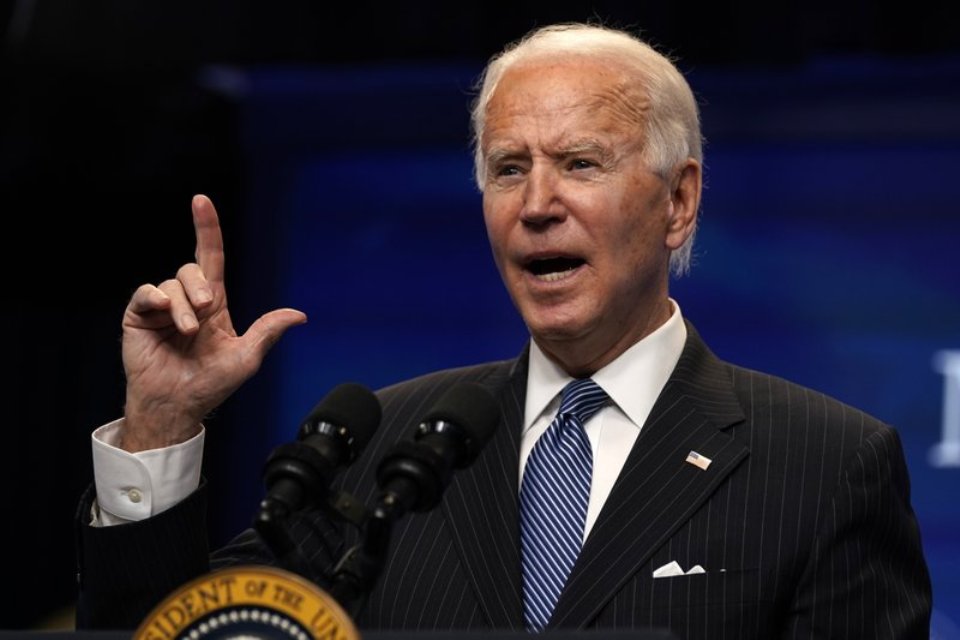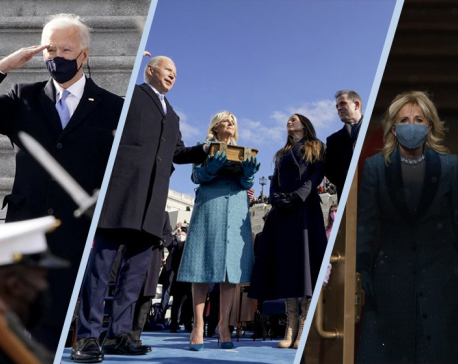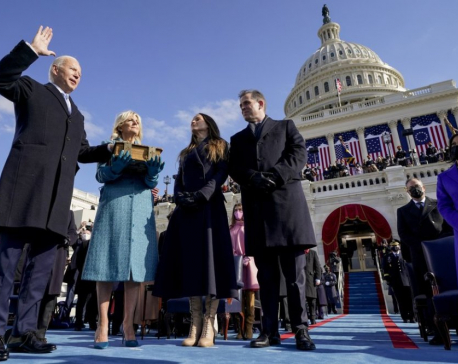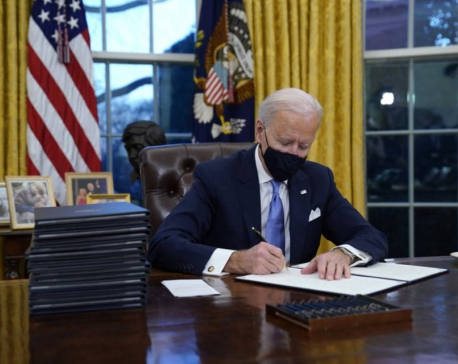
OR
Opinion
Biden’s ‘Welcome Corps’ Announcement an Opportunity for Bhutanese Refugees
Published On: February 17, 2023 07:30 AM NPT By: Hari Khanal


Hari Khanal
The author is a former Bhutanese refugee who lived in one of the refugee camps in Nepal for 17 years. He went to the United States in 2008 under the third country resettlement program. Currently, he is working as a Coordinator, Refugee Health Initiative/Case Manager at Caring Health Center in Springfield, Massachusetts. He is a certified Community Health Worker in the state of Massachusetts.news@myrepublica.com
In January 2023, US President Joe Biden announced a new program called "Welcome Corps" which will allow ordinary American citizens to use the opportunity of sponsorship for resettling refugees living in camps with an uncertain future, as reported by the US media. This can be an opportunity for the Bhutanese Refugees remaining in the camps in Nepal as well.
Before they were relocated to western countries, the forcibly-expelled Bhutanese citizens had to spend a stressful life at seven different refugee camps in eastern Nepal. An estimated 85,000 Bhutanese who took refuge in Nepal in the United Nations High Commissioner for Refugees (UNHCR)-monitored camps between 1990 and 1993 had to live in limbo for nearly two decades after fleeing their home country of Bhutan.
Amid such uncertainty, Bhutanese refugees have launched various campaigns for dignified repatriation to ensure their future and that of the younger generations. Apart from this, 15 rounds of bilateral ministerial talks were also held at various levels between the governments of Bhutan and Nepal for the repatriation of refugees. Bhutan and Nepal also agreed to categorize the refugees and repatriate those who were identified as forcibly-expelled genuine Bhutanese and started the process of joint verification. However, the future of the Bhutanese refugees had become more uncertain as the Bhutan-Nepal bilateral talks and the joint verification process failed due to the adamant stance of the Bhutanese government toward the refugees; and the repatriation campaigns initiated by the refugees themselves were not able to sustain or continue.
With no signs of possible repatriation despite various efforts, a group of 12 refugee families from various camps in Nepal decided to look for an alternative solution to the refugee crisis. In July 2004, the group submitted a joint memorandum to Milagros Lens, the head of the Damak Sub Office of UNHCR in Eastern Nepal. In their memorandum, the refugee families requested the UN body to initiate dialogue with countries willing to resettle the Bhutanese refugees and their families. I still remember Mrs. Lens telling the refugee families that "you have done the right thing, but the time to do so has not yet come."
When it became public that these 12 families had appealed to the UNHCR for resettlement, most of the Bhutanese refugees realized that the third country resettlement process (a process of selecting the refugee individuals/families and transferring them to countries who agreed to admit them as refugees with permanent residence status) is also an alternative solution. As a result, many other refugees secretly appealed to the UNHCR for resettlement fearing that they and their families could become targets of groups that were against the third country resettlement process. However, no one officially knew until then how many refugees had made such an appeal and when and how the third country resettlement process would begin.
Nearly three and a half years later, at the end of 2007, a core group of seven Western countries, including the United States, Canada, Australia, New Zealand, the Netherlands, Norway, and Denmark came up with the joint proposal to resettle the refugee families in their respective countries. About two years later, the United Kingdom also joined the core group and agreed to share the burden of admitting Bhutanese refugees to the United Kingdom.
When the proposal was made public, the Bhutanese refugees requesting resettlement were convinced that their wishes for a bright future for their children and their families would be fulfilled. The formal resettlement of Bhutanese refugees in Western countries began in March 2008, and the process gradually gained momentum. By this time, the number of Bhutanese refugees, including children born in the camps, had exceeded 100,000, and by the end of the Bhutanese refugee resettlement process, the total number of resettled Bhutanese and the people remaining in the refugee camps were estimated to have reached about 120,000 by 2017.
By the end of that year, according to Nepal's Ministry of Home Affairs and the United Nations Refugee Agency, about 111,000 Bhutanese refugees had been resettled in eight different countries under the third country resettlement process, of which more than 92,000 Bhutanese refugees had been resettled in the US alone, according to media reports.
It has been more than five years since the process of resettling the Bhutanese refugees to third countries was officially stopped. Around 8,500 Bhutanese refugees are still living in the refugee camps of eastern Nepal. Their situation has worsened after the United Nations Refugee Agency (UNHCR), which has been providing minimum basic services including food and shelter for more than two decades, withdrew from its responsibility. Experts say that the refugees in the camp are forced to live with support from their relatives who have been resettled in western countries including the US.
There is no doubt that the problem will become more complex if the remaining Bhutanese refugees in Nepal are not resettled, as the options of repatriation to Bhutan and local settlement in Nepal are not viable. It has become very difficult for the refugees to manage day to day life with very limited assistance from their relatives or friends resettled in third countries. People in the camps don't have access to free health care services and cannot afford basic construction materials (bamboo, hay, plastics) for shelter as the donor agencies totally stopped the humanitarian support for more than three years. Their children are deprived of proper education.
Majority of these refugees in the camps have relatives who have already been resettled in third countries, most of which are in the United States. It can be estimated that at least 70 percent of the people who are currently in the camps in Nepal could be reunited with their relatives already resettled in the United States, if they are given the opportunity.
Recently, in January 2023, US President Joe Biden announced a new program called "Welcome Corps" which will allow ordinary American citizens to use the opportunity of sponsorship for resettling refugees living in camps with an uncertain future as reported by the US media. This can be an opportunity for the Bhutanese Refugees remaining in the camps in Nepal as well. With this new opportunity, refugees currently living in the camps could potentially be resettled in the United States. However, the role of the already resettled Bhutanese and their religious and social organizations will be significant and meaningful toward creating an environment for the refugees in the camps to come to the US for resettlement by utilizing the Welcome Corps announced by President Biden.
Now, it is up to the resettled Bhutanese to convince the relevant parties including the US and Nepal to resume the resettlement process of the remaining Bhutanese refugees in the camps in Nepal. However, it is unlikely that the resettlement process, which has been stopped for more than five years, will resume without the direct role of the UN bodies such as UNHCR and International Organization for Migration (IOM). Therefore, it is also up to the resettled Bhutanese and their leaders to play a constructive role in re-engaging these agencies in the resettlement process.
You May Like This

In Photos: US President Joe Biden takes office
USA, Jan 21: Joe Biden took the oath of office to become the 46th president of the United States, declaring... Read More...

President Bhandari, Prime Minister Oli congratulate US President Joe Biden
KATHMANDU, Jan 21: President Bidya Devi Bhandari and Prime Minister KP Sharma Oli have sent separate messages of felicitations to... Read More...

On Day One, Biden targets Trump policies on climate, virus
WASHINGTON, Jan 21: President Joe Biden is moving swiftly to dismantle Donald Trump’s legacy on his first day in office,... Read More...






Just In
- Challenges Confronting the New Coalition
- NRB introduces cautiously flexible measures to address ongoing slowdown in various economic sectors
- Forced Covid-19 cremations: is it too late for redemption?
- NRB to provide collateral-free loans to foreign employment seekers
- NEB to publish Grade 12 results next week
- Body handover begins; Relatives remain dissatisfied with insurance, compensation amount
- NC defers its plan to join Koshi govt
- NRB to review microfinance loan interest rate











Leave A Comment